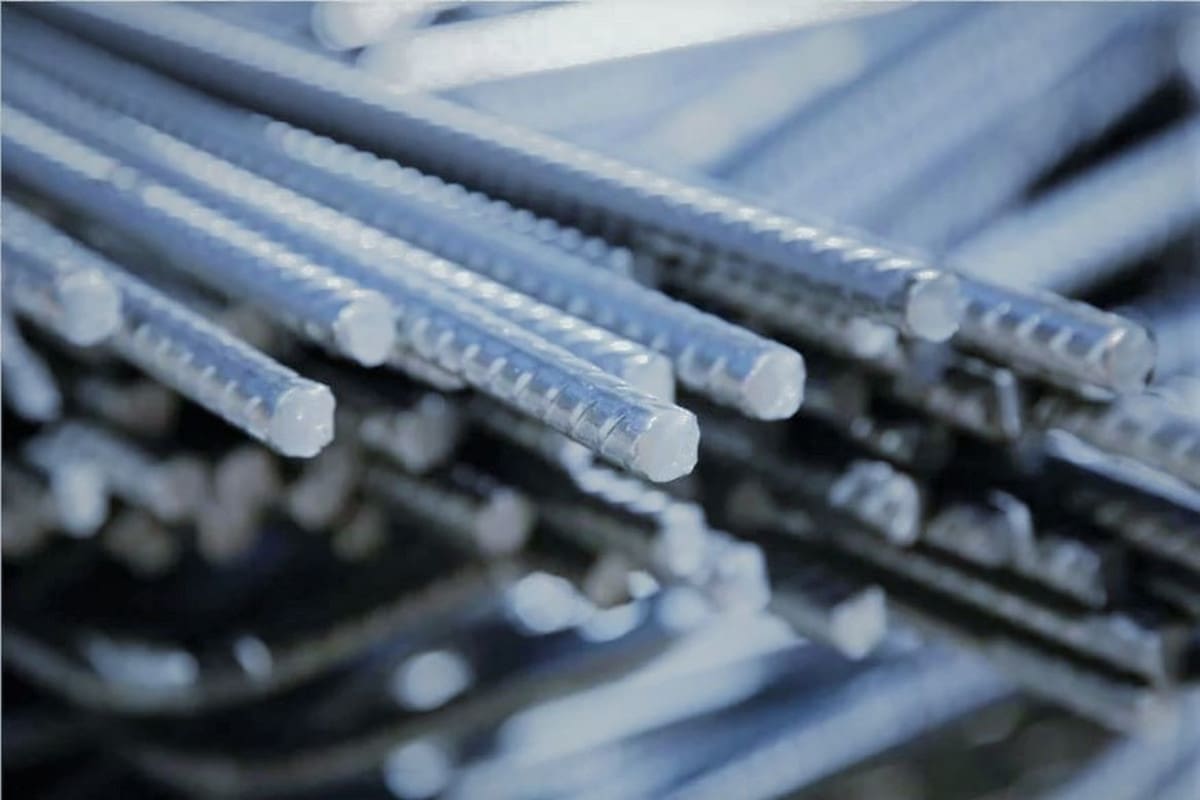Understanding steel rebar sizes is crucial for any construction project. The correct selection of rebar size becomes necessary for every project because it directly impacts the structural strength of the final construction. The building construction industry employs rebar for concrete reinforcement purposes, both for strengthening tensile properties and reinforcing resistance against cracking. Construction projects need correct steel rebar choices that ensure their safety with durability, and cost-effectiveness.
This guide explains standard steel rebar size variations alongside a rebar sizing chart, and it analyzes the popular steel bar types, which include #3 steel rebar, #4 steel rebar, and #5 steel rebar. We will also address the benefits of stainless steel rebar alongside methods to select the most suitable option for your construction requirements.
What Are Steel Rebar Sizes?
Rebar steel sizes are defined by two specific parameters: the nominal diameter and weight of the steel rod, which lead to specific strength and loading characteristics. Standard rebar receives its size designation from its nominal diameter measurements, which are represented by numbers. The number assigned to a steel rebar item indicates a measurement equivalent to one-eighth fractional parts of an inch. The standard diameter for #3 steel rebar equals 3/8 inches, yet #4 steel rebar stands at a 1/2 inch diameter.
Rebar sizes are assigned specific uses, and professionals select them according to load requirements and construction types as well as local building regulations. The selection of appropriate steel rebar dimensions determines concrete resistance to stress along with external pressure.

Steel Rebar Size Chart (with Dimensions and Weights)
A steel rebar size chart is essential for selecting the correct rebar for your project. Below is a simplified version of a standard steel rebar size chart:
| Rebar Size | Diameter (inches) | Diameter (mm) |
| #3 | 3/8″ | 9.5mm |
| #4 | 1/2″ | 12.7mm |
| #5 | 5/8″ | 15.9mm |
| #6 | 3/4″ | 19.1mm |
This steel rebar size chart is helpful for contractors and engineers in determining the most appropriate rebar for a given project. Understanding the diameter, weight, and area of each rebar helps in selecting the right size for different types of concrete constructions.
Common Rebar Sizes and Their Uses
#3 Steel Rebar
The diameter of #3 steel rebar measures 3/8 inches, while this material mainly serves concrete applications of driveways, sidewalks, and patios. The optimum use of the compact #3 steel rebar exists in applications where shallow slabs and smaller construction projects need reinforcement. Residential homeowners and DIY specialists choose this product because of its lightweight nature and convenient handling properties.
#4 Steel Rebar
In residential construction #4 steel rebar stands as one of the preferred rebar sizes because it measures exactly 1/2 inch in diameter. Civilly used #4 steel rebar acts as an excellent structural component to reinforce foundation walls, concrete slabs, and floors. It finds applications in driveway construction and sidewalk, patio, and pool deck installation. Number 4 steel rebar demonstrates excellent durability and strength, which allows numerous building tasks to choose it as their primary material.
#5 Steel Rebar
Most load-bearing projects, together with infrastructure such as highways and bridges, depend on #5 steel rebar because its 5/8 inch diameter makes it suitable for substantial structures. This material has the ability to resist higher tensile stresses, so it becomes an optimal choice for infrastructure that supports intense loads.
Benefits and Applications of Stainless Steel Rebar
Stainless steel rebar is a highly corrosion-resistant alternative to standard carbon steel rebar. It undergoes application in extreme environments consisting of marine or coastal zones and also structures exposed to high humidity, together with aggressive chemical agents. For more information on the importance of rebar detailing and its applications, visit our rebar detailing page.

Stainless steel rebar provides multiple advantages, including:
- Corrosion resistance: Unlike standard steel rebar, stainless steel rebar does not rust, making it ideal for projects near saltwater or those exposed to corrosive elements.
- Longer lifespan: Due to its resistance to corrosion, stainless steel rebar enhances the durability and longevity of concrete structures.
- Ideal for high-demand areas: Applications such as bridge decks, coastal structures, and infrastructure exposed to de-icing salts benefit greatly from stainless steel rebar.
While stainless steel rebar is more expensive than regular steel rebar, it provides long-term cost savings in terms of reduced maintenance and longer service life.
How to Choose the Right Steel Rebar Size for Your Project
When selecting the right steel rebar size for your project, consider the following:
- Structural Load: Heavier structures with larger loads require thicker rebar (such as #5 steel rebar or larger).
- Concrete Depth: Larger rebar sizes, such as #4 steel rebar and #5 steel rebars are required for deeper concrete slabs to ensure strength and stability.
- Spacing: Rebar spacing also affects the size selection. Larger rebar can be spaced further apart, while smaller rebar may need closer spacing to provide adequate reinforcement.
- Building Codes: Ensure that the selected steel rebar sizes comply with local building codes and structural requirements.
For most residential and light commercial buildings, #3 steel rebar and #4 steel rebars are sufficient. However, larger commercial or industrial projects may require #5 steel rebar or even larger sizes.
Cost Implications Based on Rebar Size
The size of the rebar directly affects the material cost. #3 steel rebar is the most affordable option, while #5 steel rebar and stainless steel rebar come at a higher price. However, while stainless steel rebar offers superior durability and corrosion resistance, its initial cost is significantly higher than traditional carbon steel rebar. When budgeting for your project, always factor in the rebar cost per foot/meter, which can fluctuate depending on the size and grade of rebar you choose. For more details, visit Strand Co.
Final Tips for Builders and Contractors
- Reference a Steel Rebar Size Chart: Always keep an updated steel rebar size chart handy to easily select the correct size for your project.
- Consult an Engineer: For large or complex projects, consult with a structural engineer to ensure the rebar size matches the structural requirements.
- Factor in Spacing and Overlap: Proper rebar placement is essential. Ensure that the rebar is spaced according to the design and code requirements.
Conclusion
The selection of appropriate steel rebar sizes becomes a fundamental aspect in all building projects. Projects will achieve longevity through their strength and durability by understanding how different steel rebar sizes, including #3 steel rebar to #5 steel rebar, affect project stability. Evaluation of the material differences between stainless steel rebar and carbon steel rebar enables proper decision-making depending on building exposure conditions.
Any structure benefits from choosing suitable rebar dimensions because it improves safety while increasing quality and reducing building expenses.





